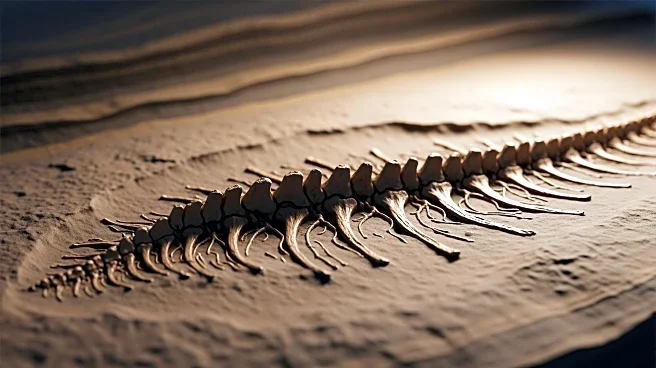What's Happening?
Paleontologists have discovered the most complete dinosaur fossil in the UK in over a century on the Isle of Wight. The fossil, belonging to a new species named Comptonatus chasei, has been detailed in the Journal
of Systematic Palaeontology. This find has generated significant interest in the paleontological community, offering new insights into the Mesozoic Era. The fossil's exceptional preservation allows for detailed anatomical studies, providing a clearer understanding of the species' characteristics and behaviors.
Why It's Important?
The discovery of Comptonatus chasei is a major milestone in paleontology, offering a rare opportunity to study a well-preserved dinosaur specimen. This find enhances understanding of dinosaur diversity and evolution, particularly within the Iguanodon family. The fossil's completeness allows scientists to explore anatomical features that were previously unknown, potentially leading to new theories about dinosaur behavior and ecology. The Isle of Wight continues to be a significant site for paleontological research, contributing to the global understanding of prehistoric life.
Beyond the Headlines
The discovery of Comptonatus chasei highlights the Isle of Wight's importance as a paleontological site, known for its rich fossil deposits. The unique environmental conditions that preserved the fossil provide insights into the geological history of the region. This find also underscores the potential for uncovering new species, challenging existing classifications and expanding knowledge of dinosaur biodiversity. The research may prompt further exploration and excavation efforts on the Isle of Wight, potentially leading to more groundbreaking discoveries.












